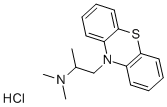Promethazine hydrochloride
- CAS No.
- 58-33-3
- Chemical Name:
- Promethazine hydrochloride
- Synonyms
- PROMETHAZINE HCL;Phena;PHENERGAN;remsed;promine;N,N-Dimethyl-1-(10H-phenothiazin-10-yl)propan-2-amine hydrochloride;dorme;atosil;hl8700;ganphen
- CBNumber:
- CB0725983
- Molecular Formula:
- C17H21ClN2S
- Molecular Weight:
- 320.88
- MDL Number:
- MFCD00012652
- MOL File:
- 58-33-3.mol
| Melting point | 230-232°C |
|---|---|
| Flash point | 9℃ |
| storage temp. | 2-8°C |
| solubility | Very soluble in water, freely soluble in ethanol (96 per cent) and in methylene chloride. |
| color | White to Almost white |
| PH | pH (50g/L, 25℃) : 4.0~6.0 |
| λmax | 297nm(H2O)(lit.) |
| Merck | 14,7786 |
| BRN | 4166397 |
| BCS Class | 1,3 |
| InChI | InChI=1S/C17H20N2S.ClH/c1-13(18(2)3)12-19-14-8-4-6-10-16(14)20-17-11-7-5-9-15(17)19;/h4-11,13H,12H2,1-3H3;1H |
| InChIKey | XXPDBLUZJRXNNZ-UHFFFAOYSA-N |
| SMILES | N1(CC(C)N(C)C)C2C=CC=CC=2SC2=CC=CC=C12.Cl |
| CAS DataBase Reference | 58-33-3(CAS DataBase Reference) |
| EWG's Food Scores | 1 |
| FDA UNII | R61ZEH7I1I |
| NCI Drug Dictionary | Phenergan |
| EPA Substance Registry System | Promethazine hydrochloride (58-33-3) |
SAFETY
Risk and Safety Statements
| Symbol(GHS) |    GHS05,GHS07,GHS09 |
|||||||||
|---|---|---|---|---|---|---|---|---|---|---|
| Signal word | Danger | |||||||||
| Hazard statements | H302-H317-H318-H411 | |||||||||
| Precautionary statements | P261-P273-P280-P301+P312-P302+P352-P305+P351+P338 | |||||||||
| Hazard Codes | Xn,N | |||||||||
| Risk Statements | 22-36/37/38-51/53-43-20/22 | |||||||||
| Safety Statements | 26-36-61-60-36/37/39-28-22 | |||||||||
| RIDADR | UN 2811 6.1/PG 3 | |||||||||
| WGK Germany | 3 | |||||||||
| RTECS | SO8225000 | |||||||||
| HazardClass | 6.1(b) | |||||||||
| PackingGroup | III | |||||||||
| HS Code | 29343000 | |||||||||
| Toxicity | LD50 i.v. in mice: 55.0 mg/kg (Rajsner) | |||||||||
| NFPA 704 |
|
Promethazine hydrochloride price More Price(33)
| Manufacturer | Product number | Product description | CAS number | Packaging | Price | Updated | Buy |
|---|---|---|---|---|---|---|---|
| Sigma-Aldrich | P-111 | Promethazine hydrochloride solution 1.0?mg/mL (1% 1 M HCl in Methanol (as free base)), ampule of 1?mL, certified reference material, Cerilliant? | 58-33-3 | 1mL | $72 | 2024-03-01 | Buy |
| Sigma-Aldrich | 1570009 | Promethazine hydrochloride United States Pharmacopeia (USP) Reference Standard | 58-33-3 | 500mg | $436 | 2024-03-01 | Buy |
| Sigma-Aldrich | 46682 | Promethazine hydrochloride VETRANAL?, analytical standard | 58-33-3 | 100mg | $104 | 2022-05-15 | Buy |
| TCI Chemical | P2029 | Promethazine Hydrochloride >98.0%(HPLC)(T) | 58-33-3 | 25g | $59 | 2024-03-01 | Buy |
| TCI Chemical | P2029 | Promethazine Hydrochloride >98.0%(HPLC)(T) | 58-33-3 | 100g | $182 | 2024-03-01 | Buy |
Promethazine hydrochloride Chemical Properties,Uses,Production
Overview
Promethazine (PM) ((RS)-N, N-dimethyl-1-(10H-phenothiazine-10-yl)propan-2-amine hydrochloride) is a phenothiazine derivative. It is a first-generation H1 receptor antagonist, antihistamine, and antiemetic medication and can also have strong sedative effects[1]. Promethazine affects ligand gated ion channels such as purinergic P2 or cholinergic ACh receptors and voltage dependent ion channels such as sodium, calcium, or potassium channels.
Beside, these effects, promethazine also inhibit the brain NaþKþ-ATPase and the mitochondrial permeability transition pore. Since its first introduction in 1946, it has been used for prevention and treatment of nausea and vomiting caused by narcotic therapy, migraine episodes, cancer chemotherapy, and so forth.[2] Meanwhile, it has become apparent that this drug interacts with many different receptors. It works by changing the actions of chemicals in brain and as an antihistamine[2]. It is used to treat allergic symptoms such as itching, runny nose, sneezing, itchy or watery eyes, hives, and itchy skin rashes, also to prevent motion sickness, and treat to nausea and vomiting pain after surgery and as a sedative or sleep aid, especially for oncologic patients. However, second-generation oral antihistamines are the preferred first-line treatment option for allergic rhinitis and urticarial, although topical first-generation antihistamines are still prescribed by general healthcare practitioner and pharmacists too easily, without taking into account possible side effects as a first line treatment for several dermatological problems[3–8].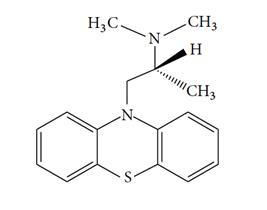
Figure 1. The chemical structure of promethazine
Pharmacodynamics
PM is well absorbed from the gastrointestinal tract. Peak plasma concentrations occur after 2 to 3 hours when promethazine is administered orally (25 to 50mg) or intramuscularly (25mg). Following rectal administration of promethazine in a suppository formulation, peak plasma concentrations were observed after about 8 hours. Oral bioavailability is approximately 25%. Rectal bioavailability has been reported at 23%. Promethazine is widely distributed in body tissues and has a large apparent volume of distribution following oral and intramuscular administration. Promethazine has been reported to be 93% protein-bound when determined by gas chromatography and as 76 to 80% protein-bound when determined by HPLC. Promethazine rapidly crosses the placenta, appearing in the cord blood within 1.5 minutes when given intravenously at term. Promethazine crosses the blood brain barrier. The elimination half-life of promethazine following oral administration has been estimated to be within the range of 12 to 15 hours. After intravenous administration of 12.5mg, blood concentrations of promethazine declined bio-exponentially with a terminal elimination half-life of 12 hours[5]. PM is metabolized principally to promethazine sulphoxide and to a lesser degree desmethylpromethazine. The major site of metabolism is the liver and that the drug is subjected to extensive first-pass hepatic biotransformation, explaining the oral bioavailability of 25%. Metabolism also occurs in the gut wall but to a lesser degree than earlier postulated. The sulphoxide metabolite has not been detected after intramuscular dosing as circulating levels are probably below analytical detection limits due to a combination of slow absorption, lower dose (50% of oral), and bypass of first-pass metabolism in the liver[3]. Its elimination is primarily due to hepatic metabolism. No evidence was found to suggest that metabolites of promethazine are pharmacologically or toxicologically active. Promethazine has not been reliably detected in breast milk[4].
Indications
PM is used for the treatment of allergic symptoms, often given at night because of its marked sedative effects. Drug hypersensitivity reactions and allergic conditions have also been treated with promethazine especially in emergencies. It can also be used in treating symptoms of asthma, pneumonia, or other lower respiratory tract infections; in fact, inhalation therapy for relieving bronchial spasm is made by quaternary salts of promethazine. PM is sometimes used for its sedative effects and in some countries is marketed for this purpose, including the sedation of young children as nasal sleep introducing drug, or it can be used as an anaesthetic premedication to produce sedation, reduce anxiety, or to reduce postoperative nausea and vomiting as dose-controlled transdermal device. The drug is often given in conjunction with an opiate analgesic such as pethidine, particularly in obstetrics. Taken before travelling, promethazine is effective in preventing motion sickness. Vomiting from other causes can be treated with higher or more frequent doses.
Combination of histamine H1R and H4R antagonist is used for the treatment of neoplastic disorders, consisting in a cytotoxic agent as an agent to prevent multidrug resistance[9]. It is also used as a contraceptive killing spermin vagina, since promethazine hydrochloride has strong sperm-killing effect, or as an antimutagenic treatment of bacteria by killing bacteria. Bathing preparation, which contains a histamine H1-antagonist, inhibits the decomposition of hyaluronic acid, playing an important role inmoisture and tension of skin to improve roughened or dried skin. This cosmetic can take such a form as gel, cream, spray, cataplasm, lotion, pack, milky lotion, or powder. It can also be a melanogenesis-suppressing agent useful as a skin-beautifying cosmetic, a skin-aging prevention agent, and so forth, by using a phenothiazine compound having remarkable melanogenesis-suppressing effect. Application of PM can be used for treating haemorrhoids with no pain, no side effect, no operation, and no hospitalization, but low cost[10–12]. Promethazine has been used to control extrapyramidal disorders in children caused by metoclopramide and levodopa-induced dyskinesia in patients with Parkinson’s disease. In young children undergoing dental procedures, it has been suggested that promethazine can be used in conjunction with chloral hydrate to produce sedation, as there was observed a lower incidence of nausea than when chloral hydrate was administered alone. In some countries, promethazine is available as a 2% cream without medical prescription for the treatment of allergic skin conditions, insect bites, and burns.
Mode of action
Promethazine is a phenothiazine antihistamine, antagonizing the central and peripheral effects of histamine mediated by histamine H1 receptors. The drug does not antagonize histamine at H2 receptors. Antihistamines competitively antagonize most of the smooth muscle stimulating actions of histamine on the H1 receptors of the gastrointestinal tract, uterus, large blood vessels, and bronchial muscle. Increased capillary permeability and oedema formation, flare, and pruritus, resulting from actions of histamine onH1 receptors, are also effectively antagonized. Promethazine appears to act by blocking H1 receptor sites, preventing the action of histamine on the cell. Promethazine rapidly crosses the blood brain barrier and it is thought that the sedative effects are due to blockade of H1 receptors in the brain. Promethazine is not used clinically for its antipsychotic properties but in common with other phenothiazines exhibits antidopaminergic properties. The antiemetic effect of promethazine may be due to blockade of dopaminergic receptors in the chemoreceptor trigger zone(CTZ) of the medulla. Promethazine has strong anticholinergic properties, blocking the responses to acetylcholine that are mediated by muscarinic receptors. These atropine-like actions are responsible for most of the side effects observed in clinical use of the drug. Promethazine also has antimotion sickness properties that may be due to central antimuscarinic action. In concentrations several times higher than those required to antagonize histamine, promethazine exhibits local anaesthetic effects. Promethazine has also been shown to inhibit calmodulin. Authors have suggested that calmodulin inhibition by promethazine could be a mechanism involved in the blockade of histamine secretion at cellular level[14].
Adverse reactions
Most reference texts suggest that the toxicity of promethazine is mainly due to its anticholinergic actions at muscarinic receptors. Many of the signs and symptoms of poisoning are similar to those observed with atropine. In the presence of anticholinergic effects, serious manifestations such as seizures, hallucinations, hypertension, and arrhythmias have been reversed by the administration of physostigmine. Besides anticholinergic 5 effects, promethazine can also exhibit toxic effects typical of antipsychotic phenothiazines. Hypotension and extrapyramidal signs may be attributable to antidopaminergic actions of promethazine[13].
Side effects usually reported are severe breathing problems or death in child younger than 2 years old. In adults, overdosage is usually characterized by CNS depression resulting in sedation and coma sometimes followed by excitement. In young children, CNS stimulation is dominant; symptoms include excitation, hallucinations, dystonias, and occasionally seizures. Anticholinergic manifestations such as dry mouth, mydriasis, and blurred vision are usually present. Overdosage may also present with various cardiorespiratory symptoms such as respiratory depression, tachycardia, hypertension or hypotension, and extrasystoles. Sedation, ranging from mild drowsiness to deep sleep, is probably the most common adverse effect. Dizziness, lassitude, disturbed coordination, and muscular weakness have all been reported. Gastrointestinal effects including epigastric distress, nausea, diarrhea, or constipation can occur. Promethazine can also cause immunoallergic reactions. Leucopenia and agranulocytosis have occurred rarely and usually in patients receiving promethazine in combination with other drugs known to cause these effects. Jaundice and thrombocytopenic purpura have been reported rarely. Extrapyramidal effects can occur, especially at high doses. Venous thrombosis has been reported at the site of intravenous injections. Arteriospasm and gangrene may follow inadvertent intra-arterial injection. Respiratory depression, sleep apnoea, and sudden infant death syndrome (SIDS) have occurred in a number of infants or young children who were receiving usual doses of promethazine[15–19].
References
- K. Yanai, “Anticholinergic activity of antihistamines,” Clinical Neurophysiology, vol. 123, no. 4, pp. 633–634, 2012.
- P. Tarkkila, K. Torn, M. Tuominen, and L. Lindgren, “Premedication with promethazine and transdermal scopolamine reduces the incidence of nausea and vomiting after intrathecal morphine,” Acta Anaesthesiologica Scandinavica, vol. 39, no. 7, pp. 983–986, 1995.
- E. R. Scherl and J. F. Wilson, “Comparison of dihydroergotamine with metoclopramide versus meperidine with promethazine in the treatment of acute migraine,” Headache, vol. 35, no. 5, pp. 256–259, 1995.
- A. U. Buzdar, L. Esparza, R. Natale et al., “Lorazepamenhancement of the antiemetic efficacy of dexamethasone and promethazine: a placebo-controlled study,” American Journal of Clinical Oncology, vol. 17, no. 5, pp. 417–421, 1994.
- J. R. Lackner and A. Graybiel, “Use of promethazine to hasten adaptation to provocative motion,” Journal of Clinical Pharmacology, vol. 34, no. 6, pp. 644–648, 1994.
- T. E. Terndrup, D. J. Dire, C. M. Madden, H. Davis, R. M. Cantor, and D. P. Gavula, “A prospective analysis of intramuscular meperidine, promethazine, and chlorpromazine in pediatric emergency department patients,” Annals of Emergency Medicine, vol. 20, no. 1, pp. 31–35, 1991.
- T. K. Lin, M.Q.Man, J. L. Santiago et al., “Topical antihistamines display potent anti-inflammatory activity linked in part to enhanced permeability barrier function,” Journal of Investigative Dermatology, vol. 133, no. 2, pp. 469–478, 2013.
- S. Ljubojevi´c and J. Lipozenci´c, “Reactions to insect stings and bites,” Acta Medica Croatica, vol. 65, no. 2, pp. 137–139, 2011.
- B. Blaya, F. Nicolau-Galm´es, S. M. Jangi et al., “Histamine and histamine receptor antagonists in cancer biology,” Inflammation and Allergy—Drug Targets, vol. 9, no. 3, pp. 146–157, 2010.
- C. Vidal Pan, A. Gonz´alez Quintela, P. Galdos Anuncibay, and J. Mateo Vic, “Topical promethazine intoxication,” Current Medical Research andOpinion, vol. 28, no. 4, pp. 623–642, 2012.
- K. Yanai, “Anticholinergic activity of antihistamines,” Clinical Neurophysiology, vol. 123, no. 4, pp. 633–634, 2012.
- X.-C. Wang, J.-G. Hong, and X.-Q. Yang, “Discussions on the use of promethazine,” Chinese Journal of Pediatrics, vol. 48,no. 7, pp. 557–558, 2010.
- “Promethazine should not be used for infants,” Pharmazie, vol. 65, no. 5, pp. 339–342, 2010.
- K.A. J.AlKhaja,T.M.AlAnsari, A. H. H. Damanhori, andR.P. Sequeira, “Evaluation of drug utilization and prescribing errors in infants: a primary care prescription-based study,” Health Policy, vol. 81, no. 2-3, pp. 350–357, 2007.
- M. R. Cohen, “Frequency and severity of promethazine adverse event reports obligated the ISMP alert,” Joint Commission Journal on Quality and Patient Safety, vol. 36, no. 3, pp. 143–144, 2010.
- J. Lazarou, B. H. Pomeranz, and P. N. Corey, “Incidence of adverse drug reactions in hospitalized patients: a metaanalysis of prospective studies,” Journal of the American Medical Association, vol. 279, no. 15, pp. 1200–1205, 1998.
- T.K.Gandhi, S.N.Weingart, J.Borus et al., “Adversedrug events in ambulatory care,”The New England Journal of Medicine, vol. 348, no. 16, pp. 1556–1564, 2003.
- D. Vervloet and S. Durham, “ABC of allergies: adverse reactions to drugs,” British Medical Journal, vol. 316, no. 7143, pp. 1511–1514, 1998.
- L. M. Sylvia, “Drug allergy, pseudoallergy, and cutaneous diseases,” in Drug-Induced Diseases: Prevention, Detection, and Management, J. E. Tisdale and D. A. Miller, Eds., American Society ofHealth-System Pharmacists, Bethesda,Md, USA, 2nd edition, 2010.
Chemical Properties
White Solid
Uses
Promethazine is a first generation histamine H1 receptor antagonist (Ki = 2.6 nM) whose antihistamine activity has been reported in guinea pigs and mice at ED50 values of 0.43 and 5.9 mg/kg, respectively. Promethazine can penetrate the CNS, depressing central H1 receptor activity, which may relate to its sedative properties, and can also inhibit muscarinic acetylcholine receptors (Ki = 22 nM). Furthermore, 32 mg/kg promethazine demonstrates antiemetic effects in ferret models of motion sickness or chemotherapy-induced nausea.
Uses
For the treatment of allergic disorders, and nausea/vomiting.
Uses
Antihistaminic, antiemetic, CNS depressant
Uses
stool softener
Uses
Promethazine hydrochloride is used as antihistamine; antiemetic; central nervous system depressant; sedative; anticholinergic; antiserotoninergic; local anesthetic; in the treatment of motion sickness, cough linctuses, nausea, and allergic conditions; used to control Parkinsonian symptoms and as central nervous system depressant; in pills, syrup, injections and suppositories.
Definition
ChEBI: The hydrochloride salt of promethazine.
brand name
Phenergan (Wyeth).
General Description
Promethazine hydrochloride,(±)10-[2-(dimethylamino)-propyl]phenothiazinemonohydrochloride (Phenergan), occurs as a white tofaint yellow crystalline powder that is very soluble in water,in hot absolute alcohol, and in chloroform. Its aqueous solutionsare slightly acid to litmus.
General Description
Odorless white to faint yellow crystalline powder. Bitter taste. A 10% solution in water has a pH of 3.5-5.0.
Air & Water Reactions
Slowly oxidizes in air, acquiring a blue color. Also turns blue on exposure to moisture. Water soluble.
Reactivity Profile
Promethazine hydrochloride is sensitive to light. In aqueous solution, Promethazine hydrochloride is degraded by heat and light (more rapidly in air or oxygen). Incompatible with alkalis and alkaline solutions such as those of aminophylline, soluble barbiturates and phenytoin sodium. Iron(III) and copper(III) accelerate the degradation .
Fire Hazard
Flash point data for Promethazine hydrochloride are not available; however, Promethazine hydrochloride is probably combustible.
Clinical Use
Antihistamine
Safety Profile
Poison by ingestion, subcutaneous, intraperitoneal, and intravenous routes. Human systemic effects by ingestion: excitement, sleep, convulsions, rigdity. Experimental teratogenic effects. Other experimental reproductive effects. When heated to decomposition it emits very toxic fumes of HCl, SOx, and NOx. Used as an antihstamine.
Veterinary Drugs and Treatments
Promethazine may be useful in dogs and cats as an antiemetic. Because of its antihistamine actions, it has been tried for treating pruritus in atopic dogs, but its efficacy has been poor.
Drug interactions
Potentially hazardous interactions with other drugs
Analgesics: possibly increased sedative effects.
Metabolism
Extensively hepatically metabolised, mainly
to promethazine sulfoxide, and also to
N-desmethylpromethazine.
It is excreted slowly via the urine and bile, mainly as
metabolites.
Dosage forms
12.5 mg PO q.i.d.; 25 mg PO at bedtime. May contain saccharin.
Promethazine hydrochloride Preparation Products And Raw materials
| Supplier | Tel | Country | ProdList | Advantage | |
|---|---|---|---|---|---|
| Baoji Guokang Bio-Technology Co., Ltd. | 0917-3909592 13892490616 | gksales1@gk-bio.com | China | 9339 | 58 |
| Guangzhou TongYi biochemistry technology Co.,LTD | +8613073028829 | mack@tongyon.com | China | 2996 | 58 |
| Guangzhou Tengyue Chemical Co., Ltd. | +86-86-18148706580 +8618826483838 | evan@tyvovo.com | China | 152 | 58 |
| Dorne Chemical Technology co. LTD | +86-13583358881 +86-18560316533 | Ethan@dornechem.com | China | 294 | 58 |
| Anhui Yiao New Material Technology Co., Ltd | +86-199-55145978 +8619955145978 | sales8@anhuiyiao.com | China | 253 | 58 |
| Wuhan Han Sheng New Material Technology Co.,Ltd | +8617798174412 | admin01@hsnm.com.cn | China | 2118 | 58 |
| Henan Bao Enluo International TradeCo.,LTD | +86-17331933971 +86-17331933971 | deasea125996@gmail.com | China | 2503 | 58 |
| Anhui Ruihan Technology Co., Ltd | +8617756083858 | daisy@anhuiruihan.com | China | 994 | 58 |
| Hebei Jingbo New Material Technology Co., Ltd | +8619931165850 | hbjbtech@163.com | China | 1000 | 58 |
| ARCTIC EXPORTS INC | +1-3026880818 +1-3026880818 | ARCTICEXPORTSINC@GMAIL.COM | Canada | 68 | 58 |
View Lastest Price from Promethazine hydrochloride manufacturers
| Image | Update time | Product | Price | Min. Order | Purity | Supply Ability | Manufacturer | |
|---|---|---|---|---|---|---|---|---|
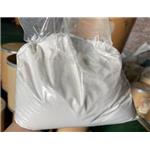 |
2024-04-25 | Promethazine hydrochloride
58-33-3
|
US $10.00 / ASSAYS | 1ASSAYS | 99% | 1 ton | Dorne Chemical Technology co. LTD | |
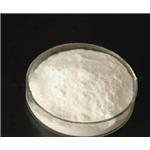 |
2024-04-19 | Promethazine hydrochloride
58-33-3
|
US $0.00 / kg | 1kg | 99% | 20tons | Shaanxi TNJONE Pharmaceutical Co., Ltd | |
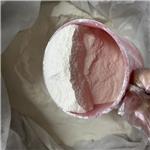 |
2024-04-12 | Promethazine hydrochloride
58-33-3
|
US $3.00-1.00 / kg | 1kg | 99.9% | 10 tons | Shanghai Aosiris new Material Technology Co., LTD |
-

- Promethazine hydrochloride
58-33-3
- US $10.00 / ASSAYS
- 99%
- Dorne Chemical Technology co. LTD
-

- Promethazine hydrochloride
58-33-3
- US $0.00 / kg
- 99%
- Shaanxi TNJONE Pharmaceutical Co., Ltd
-

- Promethazine hydrochloride
58-33-3
- US $3.00-1.00 / kg
- 99.9%
- Shanghai Aosiris new Material Technology Co., LTD
58-33-3(Promethazine hydrochloride )Related Search:
1of4





